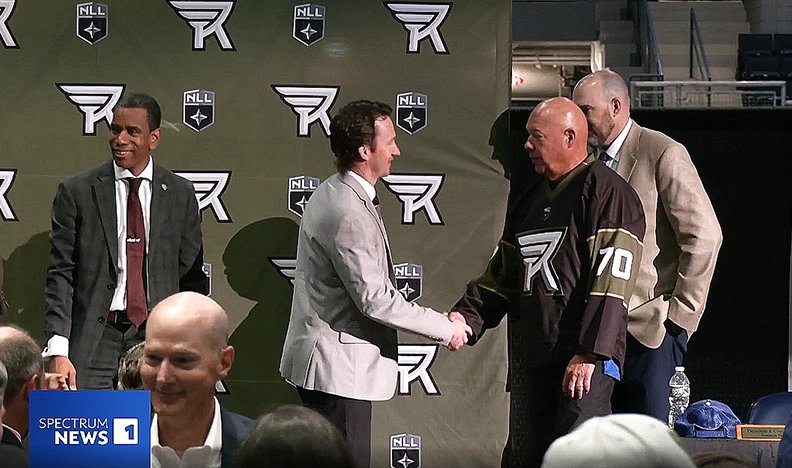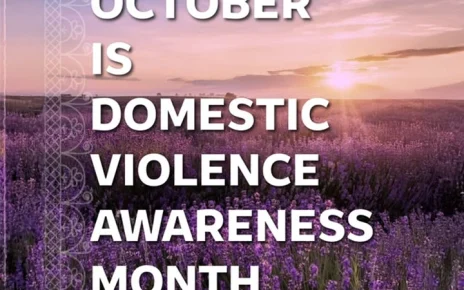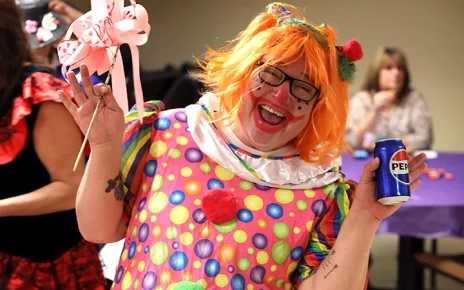October 1, 2025 | By Kevin Hayes | Republished from Spectrum News 1
Pictured above: A handshake as the announcement of the Seneca Nation purchasing the NLL’s Rochester Knighthawks between team president Dan Carey and Seneca Nation President J. Conrad Seneca. (Spectrum News 1/Kevin Hayes)
IRVING, N.Y. — Tuesday marked Truth and Reconciliation Day, bringing to light atrocities committed to Native people in North America. Today we continue to hold that light up, but the focus shifts to a culture, a people and a game, highlighting Native representation in the game of lacrosse.
It’s a growing game across the globe and one of the oldest sports in recorded history. But what if we took a deeper look at the original stewards who have brought us this game, been exploited by generations of people trying to take it, among other things from them, and who are reclaiming their role in this culture and expansion ahead of the 2028 Olympics where their game will be played?
It’s going to be a series with a lot of lessons to learn and some obstacles to go through — but we’ll start with a growing trend of getting a seat at the table: ownership of the game.
“It begins when we’re born. You know, when we were young kids being involved in the game,” said Seneca Nation President J. Conrad Seneca while tossing the ball around at the Cattaraugus Community Center.
It goes by different names. The ‘Creator’s Game’, ‘Medicine Game’, and around the world, lacrosse.
“It’s a spiritual game,” Seneca added. “And if people can grab ahold of that and understand that and incorporate that into the play of the game, it makes it even that much better.”
For a game with a rich history, such as the stewards of it, in New York, the Haudenosaunee, it has made leaps and bounds over generations.
“I think to see lacrosse over my lifetime to grow from where it was to a high school level, to the college level, to the pro level,” he said. “And now coming back in, 2028 into the Olympics.”
The popularity continues around the globe. With that, more investment from those who fall in love with it.
“My dad came home with a lacrosse stick one day, and he, I played hockey, I think that winter, introduced me to the sport and instantly fell in love with it. I think from what my parents tell me, I went to bed that night and slept with it. And then I cried the next day, getting on the bus when they wouldn’t let me bring it to school,” said Dan Carey, team president of the NLL’s Rochester Knighthawks.
The Knighthawks were recently sold to the Seneca Nation. From his early playing days up in Peterborough, Ontario to collegiate and pro careers, he’s understood the privilege of playing and helping the game grow.
“For us, it was something that we as a sport and knowing how fun it was for us, there was another meeting that was there for the Native Americans,” he said. “So at an early age, we had enough education to kind of understand it. But I think there’s always room for more knowledge and education from an overall standpoint within the sport of lacrosse.”
It’s something he looks to bolster as a new age of lacrosse is on the horizon for the NLL, which now has owners with Indigenous backgrounds like Curt Styers of the Halifax Thunderbirds and the Seneca Nation in Rochester, who both have partners like Carey across the NLL and in other pro leagues.
“It’s overwhelming at times to know that we have so much work ahead of us to get to where we want to get to,” said Carey. “But it’s also exciting and know that it’s going to be rewarding when we put the effort in.”
What we really wanted to key in on: after the announcement of the new owners of Knighthawks, just how much of a message does this send out to the lacrosse community? What part of this is unique, or has it really sunk in for some now having an ownership stake in the biggest pro lacrosse league?
“I just think this opportunity goes beyond the ability to own a lacrosse team,” said Seneca. “It’s able to give us a foothold and footprint in our area of our Aboriginal territory where we haven’t had any representation in regards to economic development or involvement with the local community there. So I think, you know, the Creator works in mysterious ways. It provided us an opportunity to do that. And I think if we can look and see beyond just the lacrosse game and the ownership of the team, there’s a lot more that we can do together.”
When you take a look at the strides the game has taken, the newest generation of owners and their connection to native roots, the phrase “born with a stick in our hands” comes up a lot. It means the inspiration grows for future generations to reach new heights.
“It exposes our community to a new possibility,” he said. “Lacrosse is the future; that’s where it all starts. And that’s as long as we can reach out and have impact in regards to that, I think, you know, it sets us on a good path forward.”
The Knighthawks are certainly not the first team to have that ownership stake. The Thunderbirds in Halifax are currently Indigenous owned and the team that just left Albany in the FireWolves previously played in Connecticut and had Mohawk ownership.




